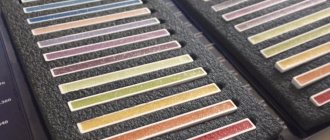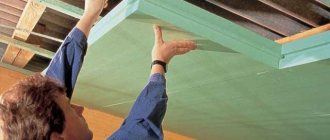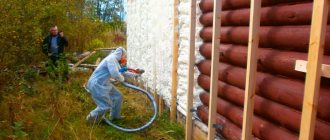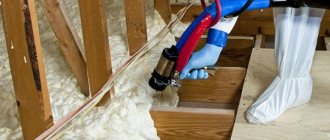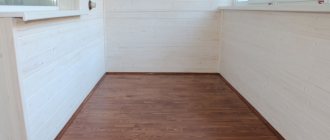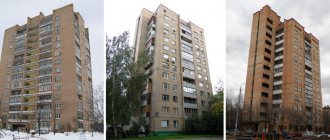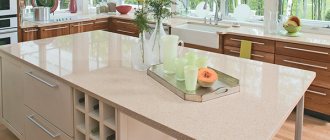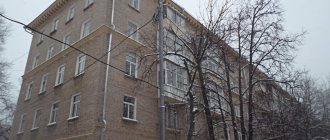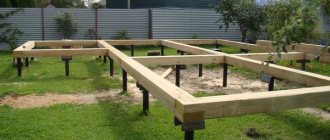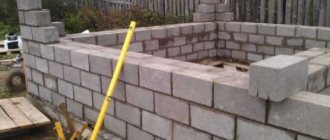Competent, rational arrangement of a house presupposes its indispensable insulation, starting from the foundation and ending with the roof. The zealous owner will not ignore the floor, the insulation of which will become a reliable barrier against the cold transmitted from the lower floors, basement or ground. Which, in principle, can significantly increase the comfort of living and reduce the overall heat loss of the entire building.
The modern construction market, in its variety of materials for floor insulation, offers the consumer more and more advanced options, among which ecowool (cellulose insulation) occupies a special place. Floor insulation with ecowool is an action whose effectiveness is recognized by all developers, and which allows high-quality preservation of heat in the house, with minimal financial and time costs.
Ecowool is insulation made from recycled cellulose with the addition of an antiseptic and fire retardant. Thanks to this composition, it is positioned as an excellent insulating material with a number of advantageous characteristics:
- high heat and sound insulation properties;
- vapor and air permeability eliminates the appearance of condensation and moisture;
- environmental friendliness and fire safety;
- impregnation of the material prevents the appearance of rodents and insects, stops the growth of fungus, suppresses the corrosion process of metal products in contact with the insulation;
- economic feasibility (the price for ecowool insulation is acceptable and affordable to any consumer);
- ease of installation of insulation, and hence high productivity.
Origin and manufacturers
The thermal properties of cellulose were familiar to people back in the century before last. It was then that thermal insulation technology based on recycled paper was patented. But such trends reached the post-Soviet space relatively recently, only in the 1990s. The fine fraction of cellulose fibers is crushed and foamed in production, but the matter does not end there. The mass must be treated with antiseptic and fire-retardant compounds that suppress rotting and inflammation and prevent the material from molding.
The environmental purity of the material is not compromised by special processing - this is a product that is produced only with natural ingredients. Flame suppression is provided by borax, occupying up to 12% of the mass. To prevent ecowool from rotting, it is necessary to use up to 7% boric acid. In Russia there are now about a dozen companies producing ecological wool. The main positions in the market are occupied by Ekovata LLC, Urallesprom, Promekovata, Vtorma-Baikal, Equator and some others.
Why is it better to entrust the insulation to an experienced craftsman?
An experienced specialist will clear the walls of plaster, carry out leveling, remove excess dust, treat the surface with a solution, install the frame, and mount ecowool in strict accordance with the rules of thermal insulation. When thinking about carrying out thermal insulation work yourself to save money, ask yourself: do you have enough skills for this? Are you ready for the costs of purchasing a heat gun and raw materials that may become unusable due to lack of experience? No? Then leave it to the professionals.
Insulation of ecowool material characteristics
How to waterproof a strip and slab foundation with a house base with your own hands Step-by-step instructions Video
Advantages of ecowool
The material is also called thermoflock and uniol. Cellulose in its composition occupies the predominant share - 81%. This material has excellent thermal insulation characteristics; its use allows you to create a seamless monolithic layer. But in its pure form it cannot be used in construction work, since it is very flammable, easily ignites, and is susceptible to the influence of various biological factors.
Adding useful fillers helps correct these characteristics. It is 7% borax and 12% boric acid. What do these components provide?
Borax is a reliable fire retardant, helping to reduce the flammability and fire hazard of the base material. Of course, to a certain extent. It is, of course, not recommended to insulate chimneys and heating boilers with such an insulator, but it is extremely good for interfloor coverings and walls. How ecowool briquettes are packaged
Boric acid has a different function. It ensures that the material loses its attractiveness to various micro- and macroorganisms: rodents, fungi and mold. Its use guarantees ecowool protection from rodents better than that of mineral wool or polystyrene foam (it must be said that they even like the latter). The material also contains a certain amount of lignin, thanks to which the smallest particles of ecowool tightly bind to the surface of the insulated structure when moistened.
In what form is ecowool produced for insulation? This is a loose, unshaped mass consisting of cellulose fibers. It is compressed to a density of 110 kg/cubic meter. meter and briquetted, facilitating loading, transportation and storage. To be used, the material must be unpacked and fluffed to such an extent that its volume has approximately quadrupled.
Main performance characteristics:
- Flammability class - G2, moderate;
- Thermal conductivity coefficient – 0.037 – 0.042;
- Vapor permeability indicator – 0.3 mg/g;
- Mounting density – 26-95;
- Density – 40 g/meter cubed;
- Smoke generation – moderate D2;
- Flame spread over the surface – 0.
Popular ecowool manufacturers
Responsible companies monitor the composition and quality of cellulose wool produced. These features, as well as the brand’s reputation, affect the cost of insulation. Well-known companies producing ecological wool include:
- Termex. Insulation of Finnish origin. Ecowool of this brand is popular in Scandinavian countries. The material contains magnesium sulfate, boric acid and pure natural clay, which acts as a fire retardant.
- Isofloc. The product from a German manufacturer is intended for the blow molding method. Suitable for insulating any surfaces, especially in houses located in the northern regions. The products have FSC, Natureplus and Swiss-Label quality certificates.
GreenFiber. Manufacturer of thermal insulation - USA. The company is considered a leader in the production of heat-insulating materials, but its products are rarely found on the Russian market due to their high prices. Ecowool from GreenFiber is considered one of the best.
GreenWool. Russian cellulose wool, which is produced at the Finnish plant Makron. High quality products comply with the national standard ISO 9001-2015. Insulation is used in the construction of residential, commercial and industrial facilities.
Climacell. Popular brand from Germany. A distinctive feature of production is the use of clean newsprint that does not contain printing ink or has safe natural dyes. Climacell is one of the most popular European brands.
In addition to the named manufacturers, other companies are also involved in the production of ecowool: Equator, Nanovata, Kirov Ecoplus, EcoVilla, ECOCELL, IGLOO Cellulose. Choosing high-quality insulation and following installation technology helps solve the problem of heat loss in rooms. Ecowool insulation today is considered one of the effective methods of thermal insulation.
Insulation of a house made of timber from the outside with ecowool
Do-it-yourself wooden staircase to the terrace for a wooden house Step-by-step instructions and drawings Photo and Video
Ecowool is produced by processing waste paper. It contains boric acid, which increases the fire resistance of the material. Ecowool also contains lignin, which promotes the adhesion of insulation to many materials.
The insulation in question is completely protected from insects and rodents, unlike polystyrene or mineral wool. Most often this material is packaged in bags.
Before use, the ecowool is poured out of the bags and allowed to dry. As a result of drying and loosening, the volume of the product increases by 3-4 times.
Advantages of the material:
- good thermal insulation properties;
- low moisture absorption. Can continue to work at 20% humidity;
- good sound insulation properties;
- dries quickly after getting wet, restoring its insulating properties;
environmentally friendly Application allows you to maintain a comfortable microclimate in the house;
does not contain toxic substances or impurities harmful to humans
Disadvantages of ecowool:
- complexity of installation technology. If you have never encountered ecowool, it is better to call a specialist. He will do everything right and in a short time;
- the material emits a lot of dust when laid dry;
- in a building where high humidity is constantly maintained, it cannot be used as insulation;
There are several ways to lay cotton wool:
- Manual method. With the manual method, the material is consumed very quickly. Most often, this method of insulation is suitable for forming thermal protection for the floor. In order to insulate the walls from the outside, wet and wet-adhesive methods are used;
- Wet method. With the wet method, the area of the space that will be covered with insulation is calculated. Next, the sheathing is erected using timber or metal profiles. Between the cells of the battens, moistened ecowool is sprayed. After spraying, the mass must dry. As a result, a strong layer of insulation is formed. Excess layer is cut off with special tools;
- The wet-glue method is similar in technology to the wet spraying method. The difference is in the addition of glue to the components of the mixture. In this case, the composition sets faster and has increased adhesion to the wood.
How is insulation carried out?
This video talks in detail about wet and dry insulation. I think after watching you will have no questions left about how to insulate a house with ecowool. It is better to do it with the hands of masters. I initially wanted to insulate my house with ecowool with my own hands using a garden vacuum cleaner, but the deeper I delved into the topic, the more I realized that it’s not worth insulating the walls using the dry method - it will settle. But it’s impossible to do it with wet hands.
So at the same time I ordered ecowool from a specialist using both the dry and wet methods, why spend money on a vacuum cleaner that costs 5-10 thousand and waste months of time manually blowing it into the floor.
Advantages and disadvantages
Do-it-yourself insulation with polyurethane foam Types and Instructions Video
The substance is supplied to the deep part of the structure through a flexible hose under pressure; cellulose fibers fill 100% of all cavities and cracks, eliminating the formation of the slightest seams and crevice areas. This is much more practical than insulation with slabs or rolls, when the seams instantly spoil the overall picture.
Consumer reviews note that ecowool prevents water from condensing from the air circulating through the pores. Glass fibers and stone insulation can accumulate moisture, but cellulose capillaries completely allow it to pass through, no matter how much moisture there is.
The fundamental rejection of harmful and volatile substances allows you not to fear for your health. Even if the house is completely engulfed in fire, environmental wool will not release toxic gas. Moreover, it will not burn on its own and will become an obstacle to the flame. This does not mean that the material has only advantages; it also has disadvantages:
- it will not be possible to install an insulating structure without complex machines;
- ecowool does not tolerate mechanical loads and is laid only in the spaces between the load-bearing parts of the structure;
- Moisture resistance is insufficient for many practical situations.
Maintaining humidity in the house
This property of ecowool is well known - natural regulation of humidity in the house. The process is ensured due to the properties of the insulation: it accumulates moisture when there is an excess of it in the air and releases moisture back when it is lacking, for example, during the heating season. By the way, ecowool absorbs moisture into itself, that is, moisture is absorbed into the fibers themselves, leaving the air between the cellulose fibers minimally humid, unlike mineral wool (if we return to the question: which is better - ecowool or mineral wool), and moist air is a conductor cold.
Disadvantages of tile and roll insulation
Yes, rolled and tile mineral wool is easy to install - roll out the roll or mark out the slab, cut off the required piece of a given size and insulate the accessible cavity. But ease of installation is not a parameter that should be followed when choosing insulation. When cutting rolled insulation, waste is inevitable; consumers overpay in advance for the excess, which will still have to be disposed of.
Mineral wool is intended for insulation of buildings made of various materials with different number of storeys and of various types, but when auditing its installation with a thermal imager or when opening it, loose joints and loose fit are often discovered, and these are, as a rule, drafts and cold islands - the main reasons for dampness of the insulation and , accordingly, loss of thermal insulation qualities. For this reason, mineral wool loses about 40% of its heat-saving properties already in the first years. And this is not always due to poor quality installation. The subsidence of the mats causes moisture, destruction of fragile stone fibers by ice crystals. And when the process is started: moisture - destruction - subsidence - the situation gets worse with each season. In such a house, preserving heat will be very, very expensive, and don’t forget that mice and rats inhabit mineral wool comfortably.
But there is an alternative that belatedly appeared on the Russian construction market in the 90s after it conquered low-rise construction in neighboring Europe and many more distant countries.
For this you will need
- garden vacuum cleaner;
- construction plastic trough or similar container;
- corrugated hose for wires;
- scotch;
- drill with an attachment for mixing paints and an attachment for holes in OSB, 72 mm in diameter.
Part of the vacuum cleaner is disconnected, and the terminals from it are transferred to the remaining part, since an excessively long trunk loses suction power or the vacuum cleaner does not turn on.
Diagram of a blow molding machine for ecowool: A) Basic platform; B) Gateway; C) Damper; D) Speed reducer; E) Baking powder; F) Loading funnel; G) Main control panel; H) Switch; I) Cord hanger; J) Feed hopper tray.
It is best to bite out the teeth that lead to the dust collector on the connection pipe in the vacuum cleaner with pliers, since ecowool gets wrapped around them and the entire passage gets clogged as a result. The corrugated hose is connected to the opening of the dust collector by wrapping it with tape. To prevent dust from flying, you can put a fingerless glove on the hose or loosely wrap some rag, which, after the hose penetrates the wall, moves, completely covering the hole.
In order to prepare walls for insulation with your own hands, holes are made in the outer covering sheets, sufficient to place an improvised hose freely, with a diameter of approximately 7-7.5 cm. Holes, as a rule, are made under the ceiling, 5-10 cm from it, at regular intervals of approximately 1 m.
Insulation using a dry method Insulation occurs in this way: ecowool is poured into the trough to about halfway, stirred and whipped with a mixer attachment, in the process occupying the entire space of the trough to the edges.
The corrugation is inserted into the hole, not reaching the bottom by about 30 cm. To do this, the required distance is measured from the outside and a corresponding mark is made on the hose with a marker.
In order to carry out the installation yourself, you will need at least two people. The first holds the corrugation while standing on a stepladder or trestles under the ceiling, the second, turning on the vacuum cleaner at medium power, gradually sucks out the ecowool from the trough.
During the insulation process, you can understand that the ecowool has already risen in the wall to the level of the hose by the sound. Laying stops, the vacuum cleaner is turned off and the hose is pulled out of the hole another half meter. Then they seal the hole again with a cut-off glove or cloth and start blowing again, turning on the vacuum cleaner.
This happens to the very top, when the hose is inserted only 1-2 cm and compacted until it stops. Insulation in this way is carried out in each hole in turn, and upon completion the hole is sealed.
Wet insulation These methods are used mainly for insulating horizontal surfaces from below, when there is no access to them from above.
Installation is carried out in the same way as in the dry version. The only difference is that before application, ecowool is wetted with water and therefore sticks when applied to vertical structures. Thus, the material completely fills the space and retains its properties after drying.
High adhesion is ensured by the presence of lignin in ecowool. This is a sticky substance of plant origin. When dry, the insulation firmly adheres to all surfaces, forming a covering layer on electrical wiring and other communications, the integrity of which is maintained for many years.
Wet-adhesive installation It differs from wet installation in that the ecowool is moistened not with water, but with glue diluted in a more liquid consistency. Its applications include low deformation during the drying process, absence of harmful impurities and elasticity.
After completion of application, the wet layer of excess is cut off with a special cutter, and then external structures are mounted.
Frequently asked questions (FAQ) on the topic of ecowool:
How long does it take to insulate a house?
We insulate a house measuring 100-200 square meters in two days. That is, we will arrive on Saturday morning, and on Monday morning your house will already be insulated. If you insulate a house of this size with your own hands and without professional equipment, it may take one or two weeks. I hope that now the question of how long it takes to insulate a house with ecowool is closed for you.
How much does it cost to insulate a house with ecowool?
I already wrote, but I’ll say it again. 2000 rubles per cubic meter (!cube, not square) of dry insulation and 3500 rubles per cubic meter of wet insulation (it is more technologically advanced and more complex).
Is there some kind of calculator?
Only manual! Here I have given you a calculation method, everyone can easily and quickly calculate the volume of ecowool they need!
What is the wet insulation method?
The wet method (more precisely, the wet-glue method) of insulation consists of using a special machine in which ecowool, water and glue are mixed, and then it delivers it under pressure to the desired location. In my opinion, cotton wool can only be applied to the walls using the wet method, since if you use the dry method, the ecowool will definitely shrink over time.
Does ecowool shrink?
Does not give! But there is one thing. Ecowool does not shrink with proper installation: with wet insulation of vertical coverings (the horizon can be done dry), as well as with the direct hands of the installer (so call people with experience, for example, us).
What should be the density of ecowool for blowing?
If we are talking about flooring, then the density should be about 35 kg per cubic meter, if we are talking about wall insulation, then the density of ecowool should be 65-75 kg per cubic meter.
Is it possible to insulate a house with ecowool in winter?
If the perimeter of the house is closed, then in winter it can be insulated down to -15.
How much water should there be in ecowool? (humidity)
It takes 30 liters of water per cube of cotton wool.
Ideal wall and floor pie under ecowool
The ideal pie: ventilated facade - MDVP - ecowool - kraft vapor-limiting paper (or PE) - lathing - plasterboard.
How to plaster the outside using ecowool?
Plastering will not work. But you can plaster using MDVP
What is the durability of ecowool?
During the entire period of using ecowool (and it has been used abroad for quite some time) it was not noticed that anything happened to ecowool. So you don’t have to worry about its durability as insulation.
How much does a 15 kg bag of ecowool cost?
A bag of ecowool comes out at current prices of approximately 450-500 rubles. You can buy ecowool at special factories. But many factories make very low-quality raw materials, so you also need to know where you can buy and where not.
What is the sufficient thickness of an ecowool layer in mm for a permanent residence house?
For a permanent residence house, the thickness of ecowool is sufficient: 200-250 mm for the floor, 200 for the walls, 250-300 for the attic or attic. Media is becoming more expensive, so it’s better not to skimp on insulation.
For a dacha, the thickness of ecowool is sufficient: 150 mm in the floor, 100 mm in the walls, 150 mm in the attic.
Is a ventilation gap (vent gap) necessary in a wall with ecowool?
A ventilation gap in a pie with ecowool is optional, but it depends (as with other insulation materials) on the complete wall pie and especially on the facade materials. If there is siding on the outside, then a ventilation gap is not needed. If the exterior decoration of the facade is wooden, then you cannot do without a ventilation gap. That is, there are no special rules regarding ecowool, unlike the same mineral wool or glass wool, all “pies” are classic.
Is it possible to insulate foam blocks from the outside using the wet method?
Yes, sure. Typically, foam blocks (aerated concrete and gas silicate blocks as well) are insulated with ecowool on the outside with a sheathing about 100 mm thick. After which the facade is made from siding (which is most convenient).
How much does it cost to insulate a 200m2 house with ecowool?
Depends on the area of the walls and floor, here I have given the calculation for a house of 100 m2. But if it’s difficult for you, please contact us in the comments, by email or by phone - we will calculate it for you.
Do you need a moisture-proof film for ecowool on the outside?
Yes, of course, as with any other insulation, a moisture- and wind-proof film is needed on the facade after the ecowool. The fact is that it protects a wooden or other facade and insulation not only from moisture, but also from blowing, and this is no less important.
Do you need a vapor barrier film with ecowool inside?
Here opinions differ. Many insist that PE is not needed inside, but I am still in favor of having it installed. Classic frame house pies all contain a vapor barrier film, and I am against inventing bicycles.
Is it possible to insulate a bathhouse?
Yes. It is not as afraid of moisture as basalt and mineral insulation and easily removes it both outside and inside. The only thing is that you need to install the vapor barrier very well in this case.
Does ecowool burn?
According to the certificate, ecowool is classified into group G2 (moderately flammable), as well as B2 (moderately flammable) and D2 (with moderate smoke-generating ability) and T2 (moderately toxic). In practice, ecowool does not burn at all; there are many experiments on the Internet with attempts to set it on fire, all unsuccessful. She only burns a little and nothing else. Ecowool does not burn due to a special additive: five- or ten-water borax. When ecowool is ignited, water is released from the borax, thereby helping to lower the temperature in the hearth and attenuate it. After this, a ceramic layer is formed on the surface of the ecowool, which prevents the fire from spreading deeper. In addition, ecowool is poorly blown by the wind, which also gives it a better chance of fighting fire.
And here are photos from the real object. I found it, as promised at the beginning of the post. The result is that ecowool does not burn :
Plywood and ecowool
How do plywood and ecowool combine? The situation with it is the same as with OSB-3 (I described above how best to get out of this situation)
How much ecowool should there be in mm?
Ceiling, floor: 200mm or 250mm Walls: 150mm or 200mm Attic: 200mm or 250mm Attic: 250mm or 300mm
Is ecowool toxic?
During the use of ecowool, no consequences for human health were identified. The fact is that both the antiseptic (boric acid) and the fire retardant (borax) are natural, sparingly soluble minerals that cannot release anything into the air during operation. Even allergy sufferers can live in a house insulated with ecowool.
The fastest insulation method. Which?
The fastest method of insulation is the wet-glue method. If you need to insulate your house very quickly, then hire specialists and everything will be done very quickly.
Is it possible to use drywall with ecowool?
Drywall with ecowool can be used. The only thing is that I would first give the ecowool a month to release excess moisture into the environment, and then I would cover it with gypsum board (plasterboard). It is also possible to successfully sew up walls insulated with wet ecowool material GSP and DSP.
What about ecowool with mice and insects? Do mice grow in ecowool?
Mice do not eat ecowool; it is inedible for them. True, there are rumors that they can still make passages in ecowool if they are allowed into it. But this can be said about any known insulation material: basalt wool, glass wool or polystyrene foam.
The main thing in the fight against mice: do not let them inside, and for this purpose steel mesh is used at the points of access to the wall (in the ventilation gap), as well as closing the access to the ceiling from below. It is also advisable to have a cat, this eliminates all possible problems.
Films and ecowool
If your house does not have rigid slab sheathing, but simply a film stretched on the outside, then insulating it from the inside with ecowool will be unrealistic. Ecowool must stick to something and this something must be hard: board, MDVP, etc. If you want to make a vapor barrier film between the main layer of insulation and an additional cross layer, then you also cannot make a cross layer of ecowool. It is better to move the vapor barrier inside the house, up to both layers of insulation. Moreover, you can also hide pipes and communication wires under the film.
Is it possible to use kraft paper in ecowool pies?
Indeed, kraf paper is very often used with ecowool. It is used by adherents of the “partial vapor barrier” method. That is, the kraft paper holds back some of the steam, and lets the rest into the ecowool. And the ecowool releases it further out. Plus, kraft paper retains dust from ecowool (if it suddenly wants to dust).
The main thing is not to use kraft paper in a pie with OSB on the outside. Then the steam will not be able to escape from the ecowool and will remain in it. So the option of using kraft paper in a pie without OSB is possible.
Is ecowool hazardous to health?
In fact, in the modern construction market, almost all products are dangerous in some way. Therefore, it is normal not to trust, but to check and investigate. As far as I could understand from my research, ecowool is not hazardous to health .
Boric acid does not get into the air (especially if we install a vapor barrier on the walls, but I still recommend installing it) plus the pores of ecowool are large and there are no small particles that can get into a person’s lungs (unlike basalt insulation). So the answer to the question: “ Is it dangerous to inhale ecowool?” " - No. But it’s still better to work with it wearing a mask, as with any other material, such as putty and other similar materials. It is better not to inhale anything unnecessary, even harmless.
A good video about ecowool that addresses this issue:
And this is a video about what ecowool looks like after 10 years (nothing has settled). So the answer to the question: does ecowool settle - no.
Methods of insulation with cellulose wool
Insulation carried out with ecowool is of three types:
- Wet;
- Dry;
- Manual.
Dry styling
The dry method of insulation with cellulose wool is relevant when working on horizontal, vertical and inclined closed surfaces:
- Paul;
- pitched roof;
- Floors, etc.
The process looks like this.
- If the plane is horizontal, a layer of waterproofing is laid.
- Logs are installed on top of the waterproofing.
- Dry ecowool is blown between the joists using a pneumatic installation. You should not excessively compact the space between the joists, otherwise the thermal insulation effect will suffer.
- Try to blow in the material with a certain excess, since ecowool settles over time.
The advantage of the dry method is that ecowool can be insulated all year round. There is no need to wait for optimal conditions for the cellulose mass to dry. But you won’t be able to do the work yourself without equipment.
Wet method
If the surface that needs thermal insulation is open, then it would be optimal to choose a wet insulation method.
- Before starting insulation, the cellulose mass is moistened with water to acquire an adhesive structure.
- Ecowool is supplied under pressure to the surface through a sprayer and sprayed onto the insulated structure.
- Adhesion provides excellent grip on wooden surfaces and more.
- To achieve high-quality thermal insulation, it is necessary to carefully fill all existing cavities.
- After completion of application, excess layers of ecowool are removed with cutters.
- It takes 24 hours for the cellulose wool to dry.
- Once the insulation is complete, you can begin finishing.
Manual method
Even when using equipment, sometimes you have to apply ecowool on surfaces with your own hands. It is not recommended to completely insulate by hand with cellulose wool, since the method’s efficiency is too low.
The only justified situation when doing insulation with your own hands is when working in hard-to-reach areas.
The process works as follows.
- The briquette with ecowool is opened, the contents are poured into a large container.
- Using a drill with an attachment, the mixture is mixed for several minutes. Please note that the material increases in volume several times when stirred. That's why the capacity must be really large.
- The loosened ecowool mixture should be poured into hard-to-reach cavities with your own hands. A scoop or small spatula works great for this.
- Tamp down the cellulose fibers. The material is poured slightly above the level of the wooden logs, since the ecowool will become compacted when laying the rough covering.
- When the last layer of cellulose wadding is poured in, lightly moisten the top layer of material with a spray bottle. This will make the ecowool denser, which will provide effective insulation.
Cellulose wool is a unique thermal insulation material in many ways. But before you use ecowool, make sure that this material is suitable for your situation.
Recommendations and useful tips
When insulating a home, it is important to remember important aspects that will help achieve the desired result:
- First of all, the thickness of the insulation should be 15 cm for the floor, 10 cm for interfloor ceilings, 20 cm for the attic.
- When buying ecowool, it is worth considering its increased consumption.
- During installation, it is better to secure high vertical structures with horizontal partitions to reduce the pressure of the weight of the insulating mixture.
Thus, if we take into account the low cost of wool, its waste-free installation and ease of application, insulation work for any type of housing will cost much less than when using other analogues.
Where does floor insulation begin?
Strange as it may sound, you need to think about floor insulation (in a private house) even when pouring the foundation: provide for ventilation of the underground space by installing vents in the basement - holes measuring 100x100 or 150x150 mm every 4...5 m. To increase ventilation of the underground you can extend the ventilation pipe above the roof:
This is necessary to prevent dampness, mold, etc. from forming under the floor. It’s better to do without it. Dampness in the basement or crawl space will lead to rotting of the wooden floor. And insulating the floor of the first floor is not very effective if it is wet underneath.
However, ventilation alone is not enough: it is necessary to prevent the penetration of ground and other water through the foundation and basement floor. How to do this, read the article about foundation insulation.
Use as bottle insulation
Absolutely any types of bottles are suitable as insulating material, but it is worth noting that they can be used for floors with light loads, for example, in a bathhouse. The operating principle of this insulation method is based on creating an air cushion using bottles.
Floor insulation with bottles is carried out according to the following algorithm:
- Preparing bottles involves heating them and then sealing them with lids (it is advisable to fill glass bottles with bulk material).
- A reinforcement mesh is installed on top of the soil base of the floor.
- The bottles are stacked (so that the necks are directed towards each other).
- The stacked bottles are filled with concrete (if necessary, in several layers).
DIY wood floor insulation technology
In my opinion, insulating a wooden floor is the most “fertile” option for insulation: working with wood is easy, no “wet” work is needed, the insulation is installed very conveniently, and almost any type of insulation is suitable. The photo below shows floor insulation with different insulation materials.
Floor insulation with expanded clay:
- penoizol:
- mineral wool or glass wool:
- ecowool:
— polystyrene foam (expanded polystyrene):
You can even insulate the floor with polyurethane foam if you insulate it from the basement side:
Insulation is most often laid between floor beams (joists). (The ends of the logs resting on the base of the foundation must be wrapped with roofing felt. The outer beam, parallel to the outer wall, is laid not close to the wall, but with a small gap. Thermal insulation is also laid in this gap.)
We attach boards or OSB or moisture-resistant plywood to the joists from below:
1 - finishing coating (laminate, parquet, parquet board, etc.); 2 - vapor barrier; 3 - subfloor made of OSB; 4 - logs; 5 - insulation; 6 - OSB
The following can be attached to the so-called cranial bars, which are attached to the logs from the sides at the very bottom:
1 - cranial bars; 2 - counter-lattice to create a gap between the vapor barrier and the finishing coating
Lay waterproofing on the resulting subfloor (what kind? - put glassine and you can’t go wrong) and then put insulation.
If the floor is insulated with sawdust, mineral wool, ecowool, glass wool, then we protect the insulation on top with a vapor barrier, which can also be foil materials, which will add efficiency to your insulation. They should be placed with foil towards the heated room. Vapor barrier strips in a stack with an overlap of at least 15 cm. A small gap is needed between such a vapor barrier and the base of the floor (if the floors are planks, and if there is laminate, then we put it directly on penofol or whatever you have).
In general, when insulating the floor with extruded polystyrene foam or polystyrene foam, you can also lay a vapor barrier on top. Of course, such insulation is not afraid of getting wet, but the vapor barrier will protect the floor beams, so there is no need to save money here, because the stingy pays... many times over. Lay at least a simple plastic film, the cheapest one (however, lay it under the laminate anyway).
That's all for insulating a wooden floor with your own hands. Using the described method, you can insulate the wooden floor of the first floor, and about the insulation of the floor of the second floor will be in the article on the thermal insulation of interfloor ceilings.
insulating a wooden floor with your own hands
Features of thermal insulation of the second floor
If you want to insulate the floors between floors in an old house, it is better to use roll coverings for these purposes. Why? They are quite light and therefore do not create a static load on the load-bearing parts of the structure. To organize a heat-insulating “pie” on the second floor, you need to do the following:
- Place roll insulation on the prepared base;
- Adjacent sheets of material are overlapped with a margin of 10-15 mm;
- To fix the thermal insulator to a wooden base, you can use a stapler;
- When using foil insulation, it is advisable to fasten the seams with masking tape;
- Now all that remains is to install the finishing coating.
The process of insulating interfloor ceilings is shown in detail in the video below.
As it turned out, there are a lot of different thermal insulators that can be used to insulate floors in a wooden house. Each of the considered heat insulators has its own disadvantages and advantages. Taking into account the basic parameters of the materials, you can choose the appropriate insulation to create an optimal microclimate in the room.
Manual styling
This material can be used for insulation in various ways.
One of them, industrial, consists of spraying pre-moistened ecowool onto the surface requiring treatment using specialized equipment, as well as pumping dry material into the insulated frame with a powerful compressor. In addition, you can install the material manually, but this will increase its consumption. This process will take an order of magnitude longer.
The manual method of installing the material is labor-intensive, increased time costs, and the impossibility of completely filling all existing cavities, voids and cracks. But many people prefer this option, since it turns out to be much cheaper.
If you intend to insulate a shed, outbuilding or garage, follow the given procedure:
- Since the material is in a compressed state, it is necessary to fluff it well. You can do this using a drill and a paint attachment. The fluffed material can begin to be used.
- The briquette with insulation is opened, the mass is poured into any suitable container.
- This method of using the material can only be used for filling it into floors (when laying it from above), or for dry laying it into a wall space.
- When filling into floors, the mass should be evenly distributed between the joists and rafters. It is used to fill all the required places until a surface with a slide is formed. When the floorboard is subsequently used, the material will be compacted to the required volume.
- When dry filling the mass into vertically located structures, it should be carefully compacted: the density of the material should become only two times less than the original one inherent in the factory briquette.
Minvata
Mineral wool is one of the most common types of insulation for insulating various elements of a building, that is, insulation is laid in the roof, floor and interior floors, floors, walls, both inside and outside the room. Tiled or rolled mineral wool allows you to quickly insulate a house, bathhouse, and various utility and non-residential premises.
Such popularity of mineral wool is easily explained by the wide selection of varieties, brands, and availability in retail chains. Also low cost, ease of installation, high heat and sound insulation characteristics. But there is another side - a negative one, which sometimes outweighs all the positive qualities of many varieties and brands of mineral wool. The use of formaldehyde resins as a binding component to form an insulating layer significantly reduces its environmental friendliness, but reducing the component reduces the moisture resistance of the finished insulating material. Only some types based on basalt fiber do not contain harmful toxins. In its pure form, it is difficult to impart the required density to mineral wool; there remains a risk of dust from mineral fibers getting into the air of the insulated room, so it is mainly produced in rolls or mats with already formed density and rigidity.
Ecowool or penoizol
Ecowool is not the only seamless insulation material, but it is the only one with a natural organic base. None of the insulation materials that can be poured, sprayed and even glued into the cavity of structures: walls, pitched roofs, floors and various ceilings has such a unique opportunity - to be identical in nature to wood and become one with wooden structures. Let's look at the example of the choice: “ecowool or penoizol”?
The main raw material in the production of penoizol is urea-formaldehyde resin - hazard class 2 - a product of polycondensation of urea with formaldehyde. When pouring, penoizol releases these formaldehydes - substances hazardous to human health. The polymerization process is not always irreversible. When heated, reverse processes are inevitable - the toxic smoke of modern fires is caused precisely by the toxins of burning polymers. But the choice: “ecowool or penoizol?” You will have to do it yourself, although our clients prefer not to take risks when there is natural material and reliable installers from the Teploservice Company.
Which insulation is better, who to trust with insulation
When choosing between price and quality, it is not always worth focusing on cost, but as usual, there are exceptions: an unsold newspaper simply cannot be expensive, and competition does its job.
Therefore, let the builders build, and it is better to trust independent teams with insulation. And let the electrician run the wires, the roofer cover the roof, the plumber supply the water, and the environmentalist, who uses insulation that is safe for human health, insulate the house. “What is better than ecowool or mineral wool” or “ecowool or penoizol” is still up to those who make a choice between these materials.
Advantages of the material
Undoubtedly, each material has a number of advantages over others. What are the advantages of ecowool?
Elastic and elastic cellulose fibers in ecowool (unlike mineral fibers used for the production of other insulation materials) do not shrink the material over time.
Ecowool Extra
The thermal insulation layer, made according to all the rules using ecowool, is more durable. Among other things, the thermal insulation properties do not deteriorate over time, which cannot be said about some other materials.
This coating is completely hygienic, hypoallergenic and non-toxic, and is also safe for humans and animals throughout the entire life of the building. Due to special processing, the components that make up ecowool remain non-toxic even with significant heating, without emitting harmful volatile gases.
Structure of mineral wool and ecowool
In the event of a fire, ecowool will not only not ignite, but will also actively localize the fire, preventing its further spread. Belonging to the category of substances that are difficult to ignite, the material does not melt or burn even at high temperatures. The decay of cellulose fibers is safe for humans and nature, and when the source of fire is eliminated, the process stops immediately.
Ecowool is fireproof
Ecowool is hygienically resistant and not susceptible to rotting, mold, various fungi and bacteria. The biostability of the insulation also extends to the materials in contact with it; their physical, chemical and consumer qualities are preserved.
It is known that concrete and brick without special treatment over time under the influence of microorganisms can be subject to destruction processes at the cellular level, which in turn can negatively affect the condition of walls, interpanel seams or window openings, causing freezing or icing of certain areas. The use of ecowool can significantly minimize this risk.
Insects and rodents do not grow in the heat-insulating layer of ecowool. Cellulose fiber and an admixture of boron are an unacceptable environment for their habitat, due to the property of boron to block the respiratory tract, causing swelling of the mucous membranes and, as a result, the death of the rodent. For certain regions, this is perhaps the only way to protect your home from rats and mice.
The fine-fiber structure is capable of filling all the voids and recesses of the room being treated, regardless of the building material, which makes it possible to build a soundproofing wall and allows you to at least double the sound insulation in comparison with mineral wool slabs, reducing to zero the transmission of sound waves through gaps and cracks in walls, floors or ceilings . No other material can provide this.
Ecowool for home
High moisture-resistant properties and low vapor permeability make it possible to accumulate and remove moisture from the hollow capillaries of the material fibers without the latter losing its qualities. Ecowool is hygroscopic, which means it does not accumulate micro-condensation, regardless of weather and climatic conditions, which prevents rotting of internal wooden floors.
The ability of the material to “breathe” makes it possible to install ecowool without using an additional vapor barrier layer, without worsening the microclimate of the building.
Ecowool allows you to obtain an even, seamless contour of thermal insulation, in which the insulation fills all hard-to-reach places and irregularities without the formation of temperature bridges.
Ecowool quality
Installation of the material is waste-free, which certainly reduces the cost of work.
Laying the insulation layer can be done at any time of the year, regardless of temperature conditions. The installation process itself is easy and technologically advantageous - there will be no waste of material. In addition, this heat-insulating composition is distinguished by high speed of installation work.
Thermal insulation ecowool
Ecowool allows for “additional insulation” during major repairs without dismantling the existing insulation layer.
In addition, ecowool can be reused without any processing.
The use of ecowool allows you to reduce heating costs in winter by 2-3 times. And keep your home cool by 30-40% in the summer.
This material is universal and can be used on any surface - vertical, horizontal or inclined.
Installation methods
Ecowool is laid manually or automatically by blowing the material under pressure. For automatic spraying, both dry insulation and mixed with water are used.
The simplest and cheapest manual method is also the most ineffective. Firstly, it is used only for insulating horizontal surfaces. And secondly, with manual distribution it is difficult to create an even layer of equal density and fill all hard-to-reach places.
By using a blow molding machine to spray dry ecowool, these problems can be avoided: the insulation, supplied under pressure, lies evenly and penetrates into all cracks and recesses. But this method is only suitable for horizontal insulation and insulation of frame buildings. In the latter case, the material is blown into the cavity between the outer and inner lining through specially made or left holes.
Dry spraying of ecowool in the cavity of the frame Source thermofloc-isolatie.nl
To insulate vertical structures and sloping roofs, only the wet-adhesive automatic application method is used. The material is mixed with water to obtain a liquid suspension and blown with special installations onto the insulated surface. The natural glue lignin contained in cellulose glues the fibers to each other and to the base.
Application of mineral wool
Floor insulation with mineral wool is one of the most common options. The popularity of such a heat insulator is due to its reasonable cost, high efficiency and ease of installation.
To complete this task, you need to go through several simple, but quite labor-intensive initial stages:
Remove the old floor covering, and it is important to consider the possibility of reusing it after laying the insulator; Leveling the surface and eliminating cracks, crevices, chips and floor defects; Installation of a vapor barrier layer (laid with an overlap on the walls); Installation of wooden guides, the distance between which is no more than 90 cm, to ensure uniform distribution of the load on the surface.
Vapor barrier layer
In general, the step size is selected based on considerations of further facilitating the installation of mineral wool (the size of the insulation sheets). All guides must be secured.
Floor insulation with mineral wool is done by laying the material along guides. To ensure a tight fit of the insulation, it is necessary to cut it to dimensions 1 cm larger than the size of the guide cage. Ideally, it is recommended to lay two layers of thermal insulation.
Laying mineral wool
Execution of a waterproofing layer.
Final covering of the surface (for example, plywood or boards).
Installation of the final layer
Compare by cost
The cost of glass wool, basalt or stone wool depends on several parameters:
- density;
- type of material (roll, plate);
- brand.
Thus, the average cost of glass wool “Ursa M-11”, located in a roll in two layers, with a length of 900 cm and a width of 120 cm, is 1170 rubles. The price of a package consisting of 12 slabs (50*600*800 mm) of Rockwool stone wool is 495 rubles. Pack of 5 slabs measuring 150*600*1200 mm of Rockwool wool – 930 rub. Stone wool from other manufacturers has different prices, which often depend on the promotion of the brand. Products from the most popular brands are always more expensive.
Ecowool is sold in bags or polyethylene packages of rectangular cross-section. The price for this material is indicated differently: per 1 kg or per 1 m³. The average price for 1 kg is 33 rubles, for 1 m³ – 1400 rubles. The spraying method of this insulation makes it possible to obtain different densities of the thermal insulation layer, the final cost of which is calculated taking this parameter into account.
Use of wood-derived insulation
Among the main wood-containing insulation options, the following are used:
- Sawdust;
- plywood
To insulate the floor with sawdust, the most common materials - residues from cutting wood - are suitable. Before use, they must be subjected to antiseptic treatment and dried. To eliminate the possibility of rodents, it is recommended to add lime to the sawdust before laying it. To create a homogeneous mass and prevent subsidence of the insulating layer over time, gypsum is added to the sawdust (about five percent of the total mass).
The sequence for carrying out insulation is as follows:
- Remove the old coating (if necessary);
- Antiseptic treatment of the surface of floor beams;
- Laying a vapor barrier layer;
- Installation of a layer of sawdust from eight to ten centimeters high
- Laying the final floor covering.
Insulating floors with plywood is considered one of the simplest and most affordable options. Installation of plywood is carried out in one or two layers, and it is worth noting that it is not subject to deformation, so it can withstand significant loads. The plywood sheets are fastened along wooden guides using self-tapping screws.
